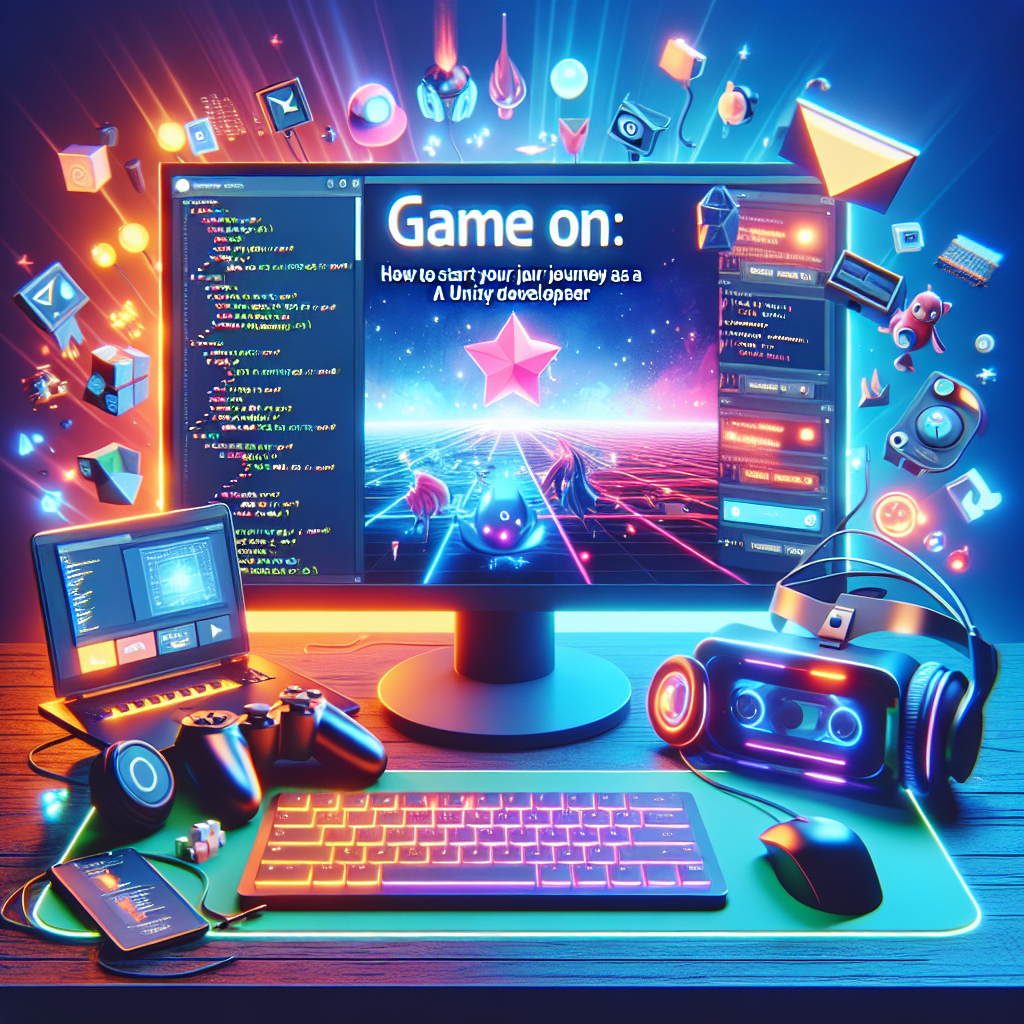Game On: How to Start Your Journey as a Unity Developer
The world of game development is an exhilarating blend of creativity and technology, where the boundaries of imagination are pushed to create immersive experiences. If you’ve ever fantasized about creating your own games, then embarking on a journey as a Unity developer may be the perfect fit for you. Unity is one of the most popular game engines in the world, renowned for its versatility, robust features, and a supportive global community. In this article, we will guide you on how to begin your journey as a Unity developer, ensuring you have the tools and knowledge you need to bring your gaming ideas to life.
Understanding Unity: The Game Engine
Before diving into development, it’s essential to understand what Unity is. Unity is a cross-platform game engine developed by Unity Technologies, which provides a comprehensive suite of tools for designing and developing video games for various platforms, including PC, consoles, mobile, and even VR/AR devices. What sets Unity apart is its user-friendly interface, extensive asset store, and powerful scripting capabilities through C#.
Step 1: Set Your Goals
To start your journey, first set clear goals. Ask yourself what type of games you’re interested in creating. Are you drawn to 2D platformers, 3D adventures, or maybe simulations? Identifying your niche will help guide your learning path. Additionally, establish what you hope to achieve: Are you aiming for a hobbyist project, a portfolio piece, or an aspiring career in game development? Setting these goals will create a roadmap for your learning journey.
Step 2: Download and Install Unity
Getting started with Unity is simple. Visit the Unity website and download the latest version of Unity Hub, which is a management tool that helps you manage multiple Unity installations and projects. Inside Unity Hub, you can choose the version of Unity you want to install, create new projects, and access your past works. Unity offers a free version, which is perfect for beginners, providing most of the features needed for learning and prototyping.
Step 3: Learn the Basics of C
Unity development often involves scripting, most commonly in C#. Familiarity with programming concepts is crucial, so if you are a complete newbie, consider taking basic programming tutorials focused on C#. Platforms such as Codecademy, freeCodeCamp, and Coursera offer excellent resources for beginners. Unity also has its own Learn platform, offering a wide variety of tutorials catered to different skill levels.
Step 4: Utilize Online Resources
The internet is a treasure trove of resources for budding developers. Here are a few platforms that stand out for Unity learning:
-
Unity Learn: The official learning platform offers free courses and tutorials covering various aspects of Unity development, from basic navigation to advanced topics like AI programming and shaders.
-
YouTube Channels: Channels like Brackeys (although no longer active, the content is still relevant), Code Monkey, and Blackthornprod offer practical, step-by-step tutorials catering to different elements of game development.
- Online Communities: Engage with the Unity community on forums such as Stack Overflow, Reddit (r/Unity3D), and Unity’s own community pages. These platforms are invaluable for troubleshooting and seeking advice from experienced developers.
Step 5: Start Small – Create Your First Game
Once you’re comfortable with the basics, it’s time to apply your knowledge. Start with simple projects like a 2D platformer or a basic puzzle game. Unity offers many starting templates that allow you to focus on learning game mechanics without starting from scratch. Don’t be afraid to experiment: Modify existing templates and explore the engine’s capabilities as you grow more confident in your skills.
Step 6: Explore Asset Creation
Great games often feature captivating visuals and sound. You can create your own art assets using software like Blender for 3D modeling, Photoshop for 2D graphics, or acquire assets from Unity’s Asset Store. Learning about animation, sound design, and level design will greatly enhance your game’s quality. Tutorials on these subjects can also be found across various platforms.
Step 7: Build and Share Your Projects
Once you have your first game or project ready, it’s time to share it with the world! Platforms like itch.io and Game Jolt allow you to publish your games and receive feedback from players. This not only helps you gauge your progress but also provides opportunities for improvement and showcases your work to potential employers.
Step 8: Keep Learning and Stay Updated
The gaming industry is continuously evolving. To stay relevant, commit to lifelong learning. Follow industry news, explore emerging technologies like augmented and virtual reality, and participate in game jams (e.g., Ludum Dare or Global Game Jam) to challenge yourself and meet other developers.
Conclusion
Embarking on your journey as a Unity developer is both thrilling and rewarding. With dedication, creativity, and a commitment to learning, you can transform your gaming ideas into virtual realities. As you navigate this path, remember that every developer starts somewhere. Embrace the process, learn from failures, and celebrate your successes, no matter how small. The gaming world is waiting for your creations—so game on!




